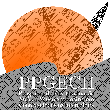Banca de QUALIFICAÇÃO: LEANDRO NENEZOKAE
Uma banca de QUALIFICAÇÃO de MESTRADO foi cadastrada pelo programa.DISCENTE : LEANDRO NENEZOKAE
DATA : 11/12/2024
HORA: 14:00
LOCAL: Sala Virtual - Meet
TÍTULO:
THE ART AND TECHNIQUE IN MAKING BASKETS OF THE HALITI-PARESI PEOPLE
PALAVRAS-CHAVES:
Haliti-Paresi Technology; Ethnosciences; Haliti-Paresi Culture; Strengthening and Innovation; Teaching.
PÁGINAS: 93
GRANDE ÁREA: Outra
ÁREA: Ensino
RESUMO:
The research, experience and description carried out on THE ART AND TECHNIQUE IN MAKING BASKETS OF THE HALITI-PARESI PEOPLE in the Postgraduate Program in Intercultural Indigenous Context of the University of Mato Grosso, was carried out with the elders, shamans, artisans, elementary school students, high school students and communities at the Cabeceira do Sacre Indigenous Municipal School in the Cabeceira do Sacre village in the Paresi Indigenous Land - MT and in its annex Estivadinho in the Estivadinho village of the Estivadinho Indigenous Land in the municipality of Tangará da Serra - MT. The research, experience and description was in the form of participatory with the objective of observing, understanding and learning THE ART AND TECHNIQUE IN MAKING BASKETS OF THE HALITI-PARESI PEOPLE. With the intention of helping to strengthen the concern of artisans in making baskets, in which these practices of the Haliti-Paresi people are at risk of becoming extinct. To understand the problem and the situation that is at risk, according to the reports of the elders, shamans and artisans, I carried out native and bibliographic consultations. After that, I held three workshops on making abali (apá) and koehe (a basket made from buriti leaves). In order to understand and create new strategies to strengthen the practice and existence of baskets in the community through research and Indigenous School Education. One of the objectives is to innovate practices through research and experience so that the practice can be strengthened in the light of ethnomathematics. Through observation, learning and experience, we can say that one of the ways to strengthen the culture of any people is with the opportunity that we have in science to make small paths to strengthen that which is part of our lives and our people.
MEMBROS DA BANCA:
Presidente - 86016007 - ADAILTON ALVES DA SILVA
Externo ao Programa - 99243008 - EDIVAGNER SOUZA DOS SANTOS
Externo à Instituição - KÉCIO GONÇALVES LEITE - UNIR




